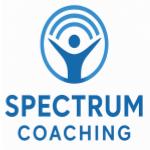Fitness built for neurodivergent minds—custom workouts, focus tools, and accountability that last.
 The Role of Fitness in Managing ADHD Symptoms
The Role of Fitness in Managing ADHD Symptoms
Fitness plays a crucial role in managing ADHD symptoms. It offers a natural, effective way to improve focus and energy. By incorporating physical activity into daily routines, individuals with ADHD can experience enhanced mental clarity and emotional regulation.
The Connection Between Physical Activity and Brain Function
Exercise directly impacts brain health. Physical activity increases dopamine, norepinephrine, and serotonin levels, chemicals that regulate attention and mood. For individuals with ADHD, these neurotransmitters are often imbalanced.
Regular exercise helps balance these chemicals. It acts like a natural stimulant, similar to ADHD medications. Studies show exercise improves executive functions, like decision-making and impulse control, essential for ADHD management.
Aerobic exercise is particularly beneficial. Activities like running, swimming, or cycling promote blood flow to the brain, enhancing cognitive performance. Even short bursts of activity can significantly improve focus and attention.
Strength training and yoga also help manage ADHD. Weightlifting improves discipline, while yoga supports relaxation and stress management. Both foster a sense of accomplishment and control.
Incorporating movement into daily life is simple. Walking or stretching during breaks can make a big difference. Over time, these habits build resilience and improve brain health, making ADHD symptoms more manageable.
Fitness as a Tool for Emotional Regulation
Exercise helps regulate emotions, a common struggle for individuals with ADHD. Physical activity reduces stress hormones like cortisol and increases endorphins, promoting feelings of happiness.
Engaging in regular fitness routines can help manage frustration and anger. Physical exertion provides an outlet for pent-up energy, reducing impulsivity and emotional outbursts.
Activities that involve rhythmic movements, like dancing or rowing, have a calming effect. These activities synchronize brainwaves, fostering emotional stability. Mind-body exercises, such as Tai Chi or Pilates, enhance self-awareness and improve emotional resilience.
Group fitness classes also contribute to emotional health. They provide social interaction and accountability, which can reduce feelings of isolation often experienced by those with ADHD. Connecting with others in a shared activity builds confidence and a sense of belonging.
Children with ADHD especially benefit from structured physical activities. Sports teach teamwork, discipline, and patience, essential skills for emotional regulation. Parents can encourage active playtime to support their child’s emotional well-being.
Making fitness a routine improves emotional stability. It equips individuals with tools to face daily challenges, fostering a balanced, happier life.
Fitness and Improved Focus for ADHD
Focus is a significant challenge for individuals with ADHD. Fitness enhances attention by promoting brain activity and reducing distractions. Regular physical activity boosts memory and improves task management skills.
Activities requiring coordination, like martial arts or tennis, are particularly effective. They engage multiple senses, demanding concentration and quick decision-making. These exercises improve the brain’s ability to filter distractions and maintain focus.
Mindfulness-based exercises, such as yoga or meditation, complement fitness routines. They train the brain to stay present and attentive. Combining mindfulness with physical activity multiplies the benefits for ADHD symptoms.
Outdoor activities, like hiking or playing sports, further enhance focus. Nature reduces mental fatigue and restores cognitive energy. Exposure to sunlight also boosts mood and energy levels, making outdoor fitness a powerful ADHD management tool.
Fitness also builds endurance for mental tasks. Over time, improved stamina translates to better focus during work or study. Physical activity strengthens neural connections, enhancing the brain’s ability to process information efficiently.
Incorporating fitness into daily routines fosters a proactive approach to focus challenges. These strategies empower individuals to stay attentive and productive throughout their day.
Managing Hyperactivity Through Fitness
Hyperactivity is a hallmark symptom of ADHD. Fitness offers a constructive way to channel excess energy and reduce restlessness. Structured exercise routines create outlets for movement, minimizing disruptive behaviors.
High-energy activities, such as running, jumping, or cycling, are ideal for managing hyperactivity. They allow individuals to burn off extra energy, leading to improved self-regulation. Cardio workouts, in particular, help stabilize energy levels over time.
Team sports also manage hyperactivity effectively. Basketball, soccer, or other group games combine physical exertion with social engagement. These sports teach cooperation and discipline, providing dual benefits for ADHD.
Movement-based activities, like dance or gymnastics, encourage creativity while addressing hyperactivity. They combine mental focus with physical effort, creating a balance that calms the mind and body.
Breaks during sedentary tasks are essential. Short bursts of activity, such as jumping jacks or stretching, can reduce fidgeting and improve attention. Schools and workplaces can incorporate these strategies to support individuals with ADHD.
Fitness transforms hyperactivity into a strength. With consistent practice, it channels energy productively, fostering a sense of control and achievement.
Fitness Routines to Support ADHD Management
Creating a fitness routine tailored to ADHD needs consistency and variety. A well-rounded approach includes aerobic exercise, strength training, and mindfulness practices.
Start with achievable goals. Walking 30 minutes daily or doing simple bodyweight exercises can lay the foundation. Gradually increase intensity and duration as habits form.
Consistency is key. Scheduling workouts at the same time each day builds routine, essential for ADHD management. Morning exercise can set a positive tone, boosting mood and focus for the rest of the day.
Variety keeps fitness engaging. Rotate between activities like swimming, yoga, and hiking to prevent boredom. Mixing solo and group exercises can also cater to changing preferences.
Technology can aid consistency. Fitness apps and trackers offer reminders and track progress, providing motivation. Gamifying workouts can make them fun and rewarding, especially for children with ADHD.
Parents can integrate family fitness activities. Weekend hikes, bike rides, or sports create bonding opportunities while supporting ADHD management. Encouraging active hobbies ensures long-term engagement.
A balanced fitness routine supports physical and mental health. It becomes a reliable tool for managing ADHD symptoms, improving overall quality of life.
Fitness for Better Sleep with ADHD
Sleep difficulties often accompany ADHD. Fitness improves sleep patterns, a critical aspect of symptom management. Regular exercise helps regulate circadian rhythms, promoting deeper and more restorative sleep.
Cardiovascular exercises, like jogging or cycling, are particularly beneficial. These activities reduce stress and fatigue, setting the stage for better sleep. Engaging in moderate-intensity workouts earlier in the day maximizes these benefits.
Yoga and stretching before bed support relaxation. They calm the nervous system, making it easier to fall and stay asleep. Breathing exercises paired with gentle stretches enhance this effect.
Outdoor fitness boosts sleep quality. Sunlight exposure during daytime activities regulates melatonin production, aligning the sleep-wake cycle. Nature also reduces anxiety, contributing to better rest.
Establishing a bedtime routine that includes light exercise can be helpful. Activities like walking or light yoga signal the body to wind down, encouraging sleep readiness.
Better sleep enhances ADHD management. It improves focus, reduces irritability, and supports emotional resilience. Fitness becomes a cornerstone for achieving restful nights and productive days.
Conclusion: The Role of Fitness in Managing ADHD Symptoms
Fitness offers a multifaceted approach to managing ADHD symptoms. It improves brain function, emotional regulation, focus, hyperactivity, and sleep. By incorporating regular physical activity into daily life, individuals with ADHD can lead healthier, more balanced lives. Fitness empowers individuals to harness their strengths and achieve their potential.


